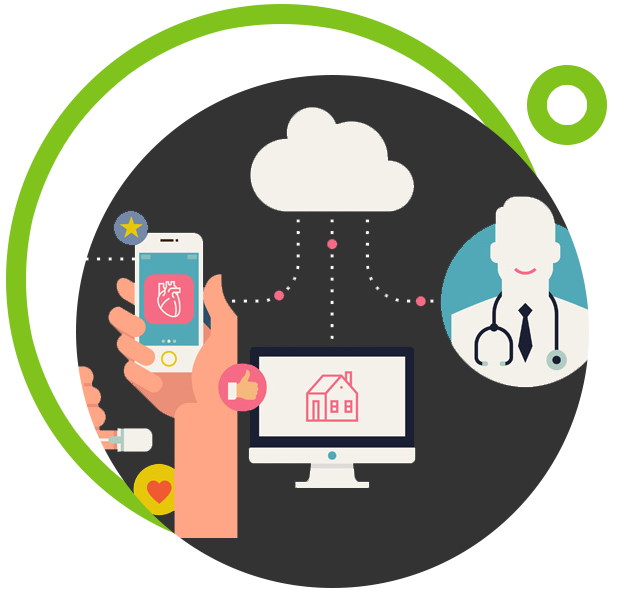
Are my cables crossed? Perhaps, but consider the different systems that can power payment and insurance verification.
For the majority of readers of this blog it is probably an inconvenience when insurance verification services are down, but for people with limited income, and little to no savings, this can be an insurmountable barrier to accessing healthcare.
Increasing the utilization and access to telehealth and virtual services is one of the goals of Healthy People 2030 to improve access and quality. While we have seen a proliferation of expanded virtual health options during Covid, there can still be barriers to accessing care beyond internet availability.
Virtual urgent care or virtual ER visits can vastly improve easy access to care with a connected smart phone to access these services. While this can still be a challenge for many, they are becoming far more ubiquitous and affordable than ever before. With a connected smart phone there is no need to take time off work, or travel to a physical location with an unknown wait time to seek care. Virtual visits can be powerful tools for those in society who are not economically stable, where each hour of pay is allocated to purchasing necessities.
Most virtual visits require upfront payment or insurance verification of coverage. This author’s recent experience to a virtual urgent care visit highlighted this. Due to a recent upgrade the health system’s insurance verification was unable to be completed, requiring a credit card and upfront payment of $70. I’m fortunate in that I have both readily available, but does everyone?
Submitting a claim to an insurance company is complicated, to put it mildly. It is highly unlikely this task could be completed easily on a smart phone. Factor in that reimbursement may not arrive before the credit card payment is due. Assuming the patient has access to a credit card, will they be able to pay that balance before reimbursement? If they have to wait until they receive reimbursement they are now subject to late fees and interest charges, which will quickly add up.
If the patient cannot pay the upfront costs, will they go somewhere else? Will they just delay care? Delaying care can lead to a downstream effect of worsening outcomes and greater expenses later on.
Studies regarding medical debt are focused on amounts greater than $250, like this study from Kaiser Family Foundation, and these large amounts can be devastating. But we also know from other studies that even small amounts of medical expenses can be enough to delay care or avoid care totally. Avoiding care can ultimately lead to more expenses and missed work later on. In the event care is paid for, what necessities may be skipped? Food? Rent payment? Vehicle Repairs? The downstream impacts can be significant.
Even as more American’s have been able to get health insurance, co-pays or up front payments can be still be a barrier to accessing the healthcare system. Automatic insurance verification is a good step toward reducing unnecessary up front payments, if it’s working. If it’s not working, it can be another barrier for those seeking healthcare.
Increasing access to care is a capability which many health systems are expanding. Once the resource is built, is it functioning as intended, or just creating another to barrier to care. Check out Tido’s end to end monitoring and digital apps test automation solutions. Ensure the most vulnerable customers are able to easily access high quality affordable care.



 All health systems, no matter if they are small, medium, or large are dealing with increasing number of applications. The COVID-19 pandemic has accelerated digital transformation in every major sector, vastly increasing our reliance on technology to meet many of our daily needs. And healthcare is no exception! Our health systems have greatly expanded their digital footprint to better serve our patients, empowering them to perform routine tasks without leaving the comfort of their home—such as paying bills, requesting medication refills, and even receiving personal health updates digitally.
All health systems, no matter if they are small, medium, or large are dealing with increasing number of applications. The COVID-19 pandemic has accelerated digital transformation in every major sector, vastly increasing our reliance on technology to meet many of our daily needs. And healthcare is no exception! Our health systems have greatly expanded their digital footprint to better serve our patients, empowering them to perform routine tasks without leaving the comfort of their home—such as paying bills, requesting medication refills, and even receiving personal health updates digitally.